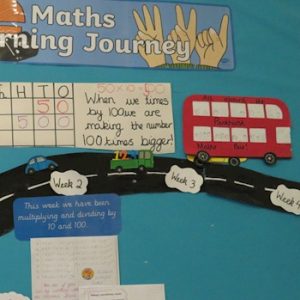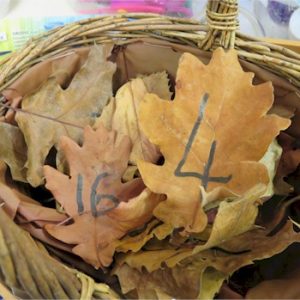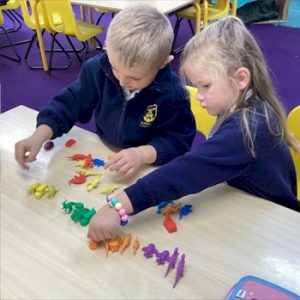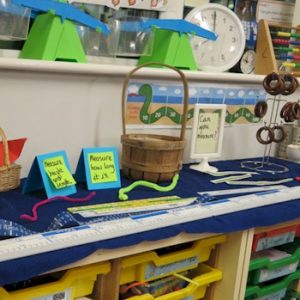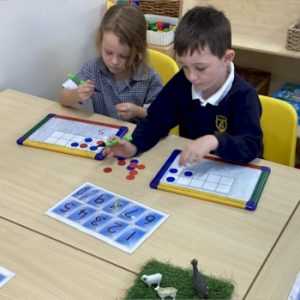
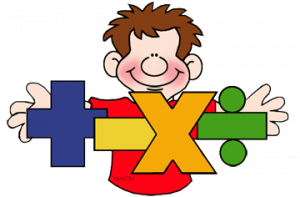 At Sandhurst Primary School it is our intent that every pupil develops a lifelong love of mathematics and pupils are encouraged by the belief that aiming high and challenging themselves at mathematics will help them succeed.
At Sandhurst Primary School it is our intent that every pupil develops a lifelong love of mathematics and pupils are encouraged by the belief that aiming high and challenging themselves at mathematics will help them succeed.
We believe that no pupil should be left behind and want to ensure that all pupils can master concepts before moving onto the next part of the curriculum sequence. We aim to develop a sense of enjoyment and curiosity and provide a programme for progression where all of our pupils are stimulated and challenged.
We are striving to develop both procedural and conceptual understanding in tandem because we recognise that each supports development of the other. From the very start of their journey with us our goal is to build a deep understanding of number, number relationships and develop fluency in addition, subtraction, multiplication and division facts and concepts.
To enable pupils to focus on new concepts, key facts such as multiplication tables and addition facts within 10 are learnt to automaticity to avoid cognitive overload in the working memory.
 We are exceptionally proud to be part of a “Maths Hub” and we are currently in our third year. The core purpose of the Maths Hubs Programme, coordinated by the NCETM (National Centre for Excellence in the Teaching of Mathematics) is to help schools lead improvement in mathematics education in England. The NCETM seeks to harness all the maths leadership and expertise within an area to develop and spread excellent practice for the benefit of all pupils and students and is part of the wider development of school-led system leadership in England.
We are exceptionally proud to be part of a “Maths Hub” and we are currently in our third year. The core purpose of the Maths Hubs Programme, coordinated by the NCETM (National Centre for Excellence in the Teaching of Mathematics) is to help schools lead improvement in mathematics education in England. The NCETM seeks to harness all the maths leadership and expertise within an area to develop and spread excellent practice for the benefit of all pupils and students and is part of the wider development of school-led system leadership in England.
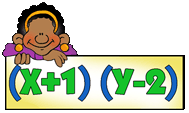 At Sandhurst Primary School, we plan our mathematics lessons using White Rose Maths.
At Sandhurst Primary School, we plan our mathematics lessons using White Rose Maths.
This blocked approach gives pupils extended periods of time to work on mathematical concepts and embed their learning. This is with a view to developing deeper understanding in all pupils and encouraging them to achieve mastery.
Pupils are taught through whole-class interactive teaching, where the focus is on all pupils working together on the same lesson content at the same time.
In conjunction with White Rose Maths, we also teach discrete daily "Mastering Number" lessons from EYFS to Year 3. In addition, we have carefully sequenced the teaching of the multiplication fact families from Year 1 to Year 5. We set weekly homework challenges, using Sumdog to support these.
At Sandhurst Primary School, teaching through White Rose, we adopt the “ping-pong” approach where the teacher leads back and forth interaction including questioning, short tasks, explanation, demonstration and discussion. Each individual lesson (small step) is structured and sequenced as follows:
- Flashback 4 - Retrieval: Flashback 4 is a series of quick questions covering something from the previous lesson, last week and then topics from earlier in the year or, in some cases, last year!
- Get Ready – Here is your starter: The starters are designed to recap learning from previous lessons in the block or recap key knowledge that is needed for the upcoming lesson.
- Let’s Learn –Get Ready for today’s new learning: Introduces and explores the key concept for the lesson together with worked examples to complete as a whole class.
- Our Turn: This section allows the teacher to guide pupils through a specific part of the learning for the lesson. This is an opportunity for teachers to demonstrate metacognition by explaining their process of completing a task. These tasks include are a variety of fluency, reasoning and problem-solving questions to ensure that all pupils are exposed to all elements of the national curriculum.
- Your turn: Pupils now apply the whole class teaching to their independent work.
- Review: How did you do? As a whole class, review the answers and discuss approaches/
- As part of our “ping-pong” approach to teaching maths, steps 4-6 are the repeated as many times as required.
- Think Pink – consolidation challenge: As a class, children draw upon their learning from the lesson to solve and complete the “Think Pink” challenge.
Following our White Rose Curriculum, we use quality-assured lesson resources, teaching slides, sentence stems and assessments to further support children’s developing mathematical skills.
Using White Rose maths, each year is split into three terms: Autumn, Spring and Summer. Each term is divided into three to six blocks of up to 15 sessions (small steps) in each.
| Autumn | Spring | Summer | |
| EYFS | Getting to know you
Just like me! Match and sort, compare amounts, compare size, mass & capacity, exploring pattern, It's me 1, 2, 3! Representing 1, 2 & 3, comparing 1, 2 & 3, composition of 1, 2 & 3, circles and triangles, positional language Light & dark Representing numbers to 5, one more or less, shapes with 4 sides and time |
Alive in 5! Introducing zero, comparing numbers to 5, composition of 4 & 5, compare mass, compare capacity.
Growing 6, 7, 8: 6, 7 & 8, combining two amounts, making pairs and length & height, time. Building 9 & 10 Counting to 9 & 10, comparing numbers to 10, bonds to 10, 3-D shapes, spatial awareness and patterns |
To 20 and beyond: build numbers beyond 10, count patterns beyond 10, spatial reasoning 1, match, rotate and manipulate.
First, then, now : Adding more, taking away, spatial reasoning and compose and decompose. Find my pattern :Doubling, sharing & grouping, even & odd, spatial reasoning 3 and visualise and build. On the move: Deepening understanding, patterns & relationships, spatial mapping and mapping |
| Year 1 |
|
|
|
| Year 2 |
|
|
|
| Year 3 |
|
|
|
| Year 4 |
|
|
|
| Year 5 |
|
|
|
| Year 6 |
|
|
|
Our White Rose curriculum provides opportunities to see what knowledge children have retained and what skills they have mastered through clear curriculum endpoints which help teachers to make judgments about each child’s progress and attainment – please see White Rose National Curriculum Progression document for these end points. Typically, at the end of each unit, children will complete an assessment that takes the form of a short assessment. This provides a summative insight that is used alongside outcomes and pupil voice to assess what has been learned. We do also have three formative assessment points throughout the year too.
Aspirations for the future
We want our pupils to develop a love for mathematics and as a result remind them, if they continue to aim high, as a mathematician they could become an astronaut, a web developer, an engineer, a games creator an architect and many other exciting professions!
This information covers years 1-6. Please see the "Downloads & Links" section for the White Rose documents applicable to EYFS learning
Addition and Subtraction
| Addition & Subtraction: Calculations | |||||
| Year 1 | Year 2 | Year 3 | Year 4 | Year 5 | Year 6 |
|
► a two-digit number and ones ► a two-digit number and tens ► two two-digit numbers ► adding three one- digit numbers |
► a three-digit number and ones ► a three-digit number and tens ► a three-digit number and hundreds
|
|
|
|
| Autumn 2
Spring 2 |
Autumn 2 | Autumn 2 | Autumn 2 | Autumn 2 | Autumn 2 |
| Addition & Subtraction: Problems | |||||
| Year 1 | Year 2 | Year 3 | Year 4 | Year 5 | Year 6 |
|
► using concrete objects and pictorial representations, including those involving numbers, quantities and measures ► applying their increasing knowledge of mental and written methods |
|
|
|
|
| Autumn 2
Spring 2 |
Autumn 2 | Autumn 2 | Autumn 2 | Autumn 2 | Autumn 2 |
| Year 1 RTP Number facts | ||
| Ready to progress criteria | Block | Steps |
| 1NF-1 Develop fluency in addition and subtraction facts within 10 | Autumn 2 | 5 – Number bonds within 10
6 – Systematic number bonds within 10 7 – Number bonds to 10 |
| Spring 2 | 2 – Add ones using number bonds
6 – Subtract ones using number bonds |
|
| 1NF-2 Count forwards and backwards in multiples of 2, 5 and 10, up to 10 multiples, beginning with any multiple, and count forwards and backwards through the odd numbers. | See under Multiplication & division | |
| Year 2 RTP Number facts | ||
| Ready to progress criteria | Block | Steps |
| 2NF-1 Secure fluency in addition and subtraction facts within 10, through continued practice. | Autumn Block 2 | 1 – Bonds to 10
6 – Add by making 10 |
| 8 – Add to the next 10 | ||
| 11 – Subtract from a 10 | ||
| Year 3 RTP Number facts | ||
| Ready to progress criteria | Block | Steps |
| 3NF-1 Secure fluency in addition and subtraction facts that bridge 10, through continued practice. | Autumn Block 2 | 6 – Add 1s across a 10
7 – Add 10s across a 100 8 – Subtract 1s across a 10 9 – Subtract 1s across a 100 13 – Add two numbers (across a 10) 14 – Add two numbers (across a 100) 15 – Subtract two numbers (across a 10) 16 – Subtract two numbers (across a 100) |
| 3NF-2 Recall multiplication facts, and corresponding division facts, in the 10, 5, 2, 4 and 8 multiplication tables, and recognise products in these multiplication tables as multiples of the corresponding number. | See under Multiplication & division | |
| 3NF-3 Apply place-value knowledge to known additive and multiplicative number facts (scaling facts by 10). | See under Multiplication & division | |
| Year 1 RTP Addition & Subtraction | ||
| Ready to progress criteria | Block | Steps |
| 1AS-1 Compose numbers to 10 from 2 parts, and partition numbers to 10 into parts, including recognising odd and even numbers. | Autumn Block 2 | 5 – Number bonds within 10
6 – Systematic number bonds within 10 7 – Number bonds to 10 |
| 1AS-2 Read, write and interpret equations containing addition (+), subtraction (−) and equals (=) symbols, and relate additive expressions and equations to
real-life contexts. |
Autumn Block 2 | 4 – Fact families – addition facts
8 – Addition – add together 9 – Addition – add more 10 – Addition problems 11 – Find a part 12 – Subtraction – find a part 13 – Fact families – the eight facts 14 – Subtraction – take away/cross out (How many left?) 15 – Subtraction – take away (How many left?) 16 – Subtraction on a number line |
| Spring Block 2 | 1 – Add by counting on within 20
6 – Subtract ones using number bonds 7 – Subtraction – counting back 8 – Subtraction – finding the difference 10 Missing number problems |
|
| Note – In the WRM schemes, odd and even numbers are explored both in Reception and Y2 but there is no explicit step in Y1 | ||
| Year 2 RTP Addition & Subtraction | ||
| Ready to progress criteria | Block | Steps |
| 2AS-1 Add and subtract across 10 | Autumn 2 | 9 – Add across a 10
10 – Subtract across a 10 11 – Subtract from a 10 12 – Subtract 1-digit number from a 2-digit number (across a 10) |
| 2AS-2 Recognise the subtraction structure of ‘difference’ and answer questions of the form, “How many more…?”. | Spring 1 | 9 – Find change |
| 2AS-3 Add and subtract within 100 by applying related one-digit addition and subtraction facts: add and subtract only ones or only tens to/from a two- digit number. | Autumn 2 | 9 – Add across a 10
10 – Subtract across a 10 11 – Subtract from a 10 12 – Subtract 1-digit number from a 2-digit number (across a 10) 13 – 10 more, 10 less 14 – Add and subtract 10s |
| 2AS-4 Add and subtract within 100 by applying related one-digit addition and subtraction facts: add and subtract any 2 two-digit numbers. | Autumn 2 | 15 – Add two 2-digit numbers (not across a 10)
16 – Add two 2-digit numbers (across a 10) 17 – Subtract two 2-digit numbers (not across a 10) 18 – Subtract two 2-digit numbers (across a 10) 19 – Mixed addition and subtraction |
| Spring 1 | 8 – Make a pound
9 – Find change |
|
| Spring 3 | 5 – Four operations with lengths and heights | |
| Year 3 RTP Addition & Subtraction | ||
| Ready to progress criteria | Block | Steps |
| 3AS-1 Calculate complements to 100 | Autumn Block 2 | 19 – Complements to 100 |
| Summer 2 | 4 – Subtract money
5 – Find change |
|
| 3AS-2 Add and subtract up to three-digit numbers using columnar methods. | Autumn Block 2 | 11 – Add two numbers (no exchange)
12 – Subtract two numbers (no exchange) 13 – Add two numbers (across a 10) 14 – Add two numbers (across a 100) 15 – Subtract two numbers (across a 10) 16 – Subtract two numbers (across a 100) 17 – Add 2-digit and 3-digit numbers 18 – Subtract a 2-digit number from a 3-digit number |
| 3AS-3 Manipulate the additive relationship: Understand the inverse relationship between addition and subtraction, and how both relate to the part–part–whole structure.
Understand and use the commutative property of addition, and understand the related property for subtraction. |
Autumn Block 2 | 21 – Inverse operations
22 – Make decisions |
| Summer 2 | 3 – Add money
4 – Subtract money 5 – Find change |
|
| Year 6 RTP Addition, subtraction, multiplication and division | ||
| Ready to progress criteria | Block | Steps |
| 6AS/MD-1 Understand that 2 numbers can be related additively or multiplicatively, and quantify additive and multiplicative relationships (multiplicative relationships restricted to multiplication by a whole number). | Spring 1 | 1 – Add or multiply?
5 – Scale drawing 6 – Use scale factors 7 – Similar shapes 8 – Ratio problems 9 – Proportion problems 10 – Recipes |
| 6AS/MD-2 Use a given additive or multiplicative calculation to derive or complete a related calculation, using arithmetic properties, inverse relationships, and place-value understanding. | Autumn 2 | 8 – Solve problems with multiplication 10 – Division using factors
13 – Solve problems with division 14 – Solve multi-step problems 17 – Reason from known facts |
| 6AS/MD-3 Solve problems involving ratio relationships. | See under Ratio and proportion | |
| 6AS/MD-4 Solve problems with 2 unknowns. | See under Algebra | |
Multiplication and Division
| Multiplication & Division: Recall/Use | |||||
| Year 1 | Year 2 | Year 3 | Year 4 | Year 5 | Year 6 |
|
|
|
|
|
|
| Spring 2 | Autumn 3
Spring 1 |
Autumn 4
Spring 1 |
Autumn 3 | Autumn 2 | |
| Multiplication & Division: Calculations | |||||
| Year 1 | Year 2 | Year 3 | Year 4 | Year 5 | Year 6 |
|
|
|
|
|
|
| Spring 2 | Autumn 3
Spring 1 |
Spring 1 | Autumn 3
Spring 1 |
Autumn 2 | |
| Multiplication & Division: Problems | |||||
| Year 1 | Year 2 | Year 3 | Year 4 | Year 5 | Year 6 |
|
|
|
|
|
|
| Summer 1 | Spring 2 | Spring 1 | Spring 1 | Autumn 3
Spring 1 |
Autumn 2 |
| Multiplication & Division: Combined | |||||
| Year 1 | Year 2 | Year 3 | Year 4 | Year 5 | Year 6 |
|
|
||||
| Spring 1 | Autumn 2 | ||||
| Year 1 RTP Number facts | ||
| Ready to progress criteria | Block | Steps |
| 1NF-1 Develop fluency in addition and subtraction facts within 10 | See under Addition & subtraction | |
| 1NF-2 Count forwards and backwards in multiples of 2, 5 and 10, up to 10 multiples, beginning with any multiple, and count forwards and backwards through the odd numbers. | Summer 1 | 1 – Count in 2s
2 – Count in 10s 3 – Count in 5s |
| Summer 4 | 2 – Tens to 100 | |
| Summer 5 | 4 – Count in coins | |
| Year 3 RTP Number facts | ||
| Ready to progress criteria | Block | Steps |
| 3NF-1 Secure fluency in addition and subtraction facts that bridge 10, through continued practice. | See under Addition & subtraction | |
| 3NF-2 Recall multiplication facts, and corresponding division facts, in the 10, 5, 2, 4 and 8 multiplication tables, and recognise products in these multiplication tables as multiples of the corresponding number. | Autumn Block 3 | 3 – Multiples of 2
4 – Multiples of 5 and 10 5 – Sharing and grouping 9 – Multiply by 4 10 – Divide by 4 11 – The 4 times-table |
| 3NF-3 Apply place-value knowledge to known additive and multiplicative number facts (scaling facts by 10). | Spring 1 | 1 – Multiples of 10
2 – Related calculations 10 – Scaling |
| Spring 3 | 6 – Fractions and scales
9 – Equivalent fractions on a number line 10 – Equivalent fractions as bar models |
|
| Year 4 RTP Number facts | ||
| Ready to progress criteria | Block | Steps |
| 4NF-1 Recall multiplication and division facts up to 12 × 12 and recognise products in multiplication tables as multiples of the corresponding number. | Autumn 4 | All 13 steps in this block relate to this criterion |
| Spring 1 | 1 – Factor pairs
2 – Use factor pairs 7 – Related facts – multiplication and division 8 – Informal written methods for multiplication 9 – Multiply a 2-digit number by a 1-digit number 10 – Multiply a 3-digit number by a 1-digit number |
|
| 4NF-2 Solve division problems, with two-digit dividends and one-digit divisors, that involve remainders, and interpret remainders appropriately according to the context. | Autumn 4 | All 13 steps in this block relate to this criterion |
| Spring 1 | 11 – Divide a 2-digit number by a 1-digit number (1)
12 – Divide a 2-digit number by a 1-digit number (2) 13 – Divide a 3-digit number by a 1-digit number |
|
| 4NF-3 Apply place-value knowledge to known additive and multiplicative number facts (scaling facts by 100). | Spring 1 | 4 – Multiply by 100
6 – Divide by 100 |
| Spring 4 | 10 – Divide a 1- or 2-digit number by 100 | |
| Year 5 RTP Number facts | ||
| Ready to progress criteria | Block | Steps |
| 5NF-1 Secure fluency in multiplication table facts, and corresponding division facts, through continued practice. | Autumn 3 | 1 – Multiples
2 – Common multiples 3 – Factors 4 – Common factors 6 – Square numbers |
| Spring 1 | All 11 steps in this block relate to this criterion | |
| Spring 2 | All 7 steps in this block relate to this criterion | |
| 5NF-2 Apply place-value knowledge to known additive and multiplicative number facts (scaling facts by 1 tenth or 1 hundredth). | Autumn 3 | 10 – Divide by 10, 100 and 1,000 |
| Year 2 RTP Multiplication & division | ||
| Ready to progress criteria | Block | Steps |
| 2MD-1 Recognise repeated addition contexts, representing them with multiplication equations and calculating the product, within the 2, 5 and 10 multiplication tables. | Spring 2 | 4 – Introduce the multiplication symbol
5 – Multiplication sentences 9 – The 2 times-table 13 – The 10 times-table 15 – The 5 times-table 17 – The 5 and 10 times-tables |
| Spring 4 | 8 – Four operations with volume and capacity | |
| Summer 2 | 5 – Tell the time to 5 minutes
6 – Minutes in an hour |
|
| 2MD-2 Relate grouping problems where the number of groups is unknown to multiplication equations with a missing factor, and to division equations (quotitive division). | Spring 2 | 2 – Make equal groups
7 – Make equal groups – grouping 8 – Make equal groups – sharing 10 – Divide by 2 14 – Divide by 10 16 – Divide by 5 |
| Year 3 RTP Multiplication & division | ||
| Ready to progress criteria | Block | Steps |
| 3MD-1 Apply known multiplication and division facts to solve contextual problems with different structures, including quotitive and partitive division. | Autumn 3 | All 15 steps in this block relate to this criterion |
| Spring 1 | All 11 steps in this block relate to this criterion | |
| Year 4 RTP Multiplication & division | ||
| Ready to progress criteria | Block | Steps |
| 4MD-1 Multiply and divide whole numbers by 10 and 100 (keeping to whole number quotients); understand this as equivalent to making a number 10 or 100 times the size. | Spring 1 | 3 – Multiply by 10
4 – Multiply by 100 5 – Divide by 10 6 – Divide by 100 |
| 4MD-2 Manipulate multiplication and division equations, and understand and apply the commutative property of multiplication. | Autumn 4 | All 13 steps in this block relate to this criterion |
| 4MD-3 Understand and apply the distributive property of multiplication. | Spring 1 | 8 – Informal written methods for multiplication
9 – Multiply a 2-digit number by a 1-digit number 10 – Multiply a 3-digit number by a 1-digit number |
| Year 5 RTP Multiplication & division | ||
| Ready to progress criteria | Block | Steps |
| 5MD-1 Multiply and divide numbers by 10 and 100; understand this as equivalent to making a number 10 or 100 times the size, or 1 tenth or 1 hundredth times the size. | Autumn 3 | 8 – Multiply by 10, 100 and 1,000
9 – Divide by 10, 100 and 1,000 10 – Multiples of 10, 100 and 1,000 |
| Summer 3 | 10 – Multiply by 10, 100 and 1,000
11 – Divide by 10, 100 and 1,000 12 – Multiply and divide decimals - missing values |
|
| 5MD-2 Find factors and multiples of positive whole numbers, including common factors and common multiples, and express a given number as a product of 2 or 3 factors. | Autumn 3 | 1 – Multiples
2 – Common multiples 3 – Factors 4 – Common factors 6 – Square numbers |
| 5MD-3 Multiply any whole number with up to 4 digits by any one-digit number using a formal written method. | Spring 1 | 1 – Multiply up to a 4-digit number by a 1-digit number
2 – Multiply a 2-digit number by a 2-digit number (area model) 3 – Multiply a 2-digit number by a 2-digit number 4 – Multiply a 3-digit number by a 2-digit number 5 – Multiply a 4-digit number by a 2-digit number |
| 5MD-4 Divide a number with up to 4 digits by a one- digit number using a formal written method, and interpret remainders appropriately for the context. | Spring 1 | 7 – Short division
8 – Divide a 4-digit number by a 1-digit number 9 – Divide with remainders |
| Year 6 RTP Addition, subtraction, multiplication and division | ||
| Ready to progress criteria | Block | Steps |
| 6AS/MD-1 Understand that 2 numbers can be related additively or multiplicatively, and quantify additive and multiplicative relationships (multiplicative relationships restricted to multiplication by a whole number). | Spring 1 | 1 – Add or multiply?
5 – Scale drawing 6 – Use scale factors 7 – Similar shapes 8 – Ratio problems 9 – Proportion problems 10 – Recipes |
| 6AS/MD-2 Use a given additive or multiplicative calculation to derive or complete a related calculation, using arithmetic properties, inverse relationships, and place-value understanding. | Autumn 2 | 8 – Solve problems with multiplication 10 – Division using factors
13 – Solve problems with division 14 – Solve multi-step problems 17 – Reason form known facts |
| 6AS/MD-3 Solve problems involving ratio relationships. | See under Ratio and proportion | |
| 6AS/MD-4 Solve problems with 2 unknowns. | See under Algebra | |
Fractions
| Fractions: Recognise and write | |||||
| Year 1 | Year 2 | Year 3 | Year 4 | Year 5 | Year 6 |
|
|
|
|
|
|
| Summer 2 | Summer 1 | Spring 3 | Spring 4
Summer 1 |
Autumn 4 | |
| Fractions: Compare | |||||
| Year 1 | Year 2 | Year 3 | Year 4 | Year 5 | Year 6 |
|
|
|
|
|
|
| Summer 1 | Spring 3 | Spring 3 | Autumn 4 | Autumn 3 | |
| Fractions: Calculations | |||||
| Year 1 | Year 2 | Year 3 | Year 4 | Year 5 | Year 6 |
|
|
|
|
|
|
| Summer 1 | Summer 1 | Spring 3 | Autumn 4
Spring 2 |
Autumn 3
Autumn 4 |
|
| Fractions: Solve problems | |||||
| Year 1 | Year 2 | Year 3 | Year 4 | Year 5 | Year 6 |
|
|
||||
| Spring 3
Summer 1 |
Spring 3 | ||||
| Decimals: Recognise, write, compare | |||||
| Year 1 | Year 2 | Year 3 | Year 4 | Year 5 | Year 6 |
|
|
|
|||
| Spring 4
Summer 1 |
Spring 3
Summer 3 |
Spring 3 | |||
| Fractions, decimals and percentages | |||||
| Year 1 | Year 2 | Year 3 | Year 4 | Year 5 | Year 6 |
|
|
|
|||
| Spring 3
Spring 4 Summer 1 |
Spring 3 |
Spring 3
Spring 4 |
|||
| Year 3 RTP Fractions | ||
| Ready to progress criteria | Block | Steps |
| 3F-1 Interpret and write proper fractions to represent 1 or several parts of a whole that is divided into equal parts. | Spring 3 | 1 – Understand the denominators of unit fractions
3 – Understand the numerators of non-unit fractions 4 – Understand the whole |
| 3F-2 Find unit fractions of quantities using known division facts (multiplication tables fluency). | Summer 1 | 4 – Unit fractions of a set of objects |
| 3F-3 Reason about the location of any fraction within 1 in the linear number system. | Spring 3 | 2 – Compare and order unit fractions
5 – Compare and order non-unit fractions 7 – Fractions on a number line 8 – Count in fractions on a number line |
| 3F-4 Add and subtract fractions with the same denominator, within 1 | Summer 1 | 1 – Add fractions
2 – Subtract fractions |
| Year 4 RTP Fractions | ||
| Ready to progress criteria | Block | Steps |
| 4F-1 Reason about the location of mixed numbers in the linear number system. | Spring 3 | 4 – Number lines with mixed numbers
5 – Compare and order mixed numbers |
| 4F-2 Convert mixed numbers to improper fractions and vice versa. | Spring 3 | 7 – Convert mixed numbers to improper fractions
8 – Convert improper fractions to mixed numbers |
| 4F-3 Add and subtract improper and mixed fractions with the same denominator, including bridging whole numbers. | Spring 3 | 12 – Add fractions and mixed numbers
14 – Subtract from whole amounts 15 – Subtract from mixed numbers |
| Year 5 RTP Fractions | ||
| Ready to progress criteria | Block | Steps |
| 5F-1 Find non-unit fractions of quantities. | Spring 2 | 4 – Calculate a fraction of a quantity
5 – Fraction of an amount |
| 5F-2 Find equivalent fractions and understand that they have the same value and the same position in the linear number system. | Autumn 4 | 1 – Find fractions equivalent to a unit fraction
2 – Find fractions equivalent to a non-unit fraction 3 – Recognise equivalent fractions |
| 5F-3 Recall decimal fraction equivalents for 1/4, 1/2, 1/5 and 1/10 and for multiples of these proper fractions. | Spring 3 | 2 – Equivalent fractions and decimals (tenths)
3 – Equivalent fractions and decimals (hundredths) 4 – Equivalent fractions and decimals |
| Year 6 RTP Fractions | ||
| Ready to progress criteria | Block | Steps |
| 6F-1 Recognise when fractions can be simplified, and use common factors to simplify fractions. | Autumn 3 | 1 – Equivalent fractions and simplifying
2 – Equivalent fractions on a number line |
| 6F-2 Express fractions in a common denomination and use this to compare fractions that are similar in value. | Autumn 3 | 3 – Compare and order (denominator) |
| 6F-3 Compare fractions with different denominators, including fractions greater than 1, using reasoning, and choose between reasoning and common denomination as a comparison strategy. | Autumn 3 | 3 – Compare and order (denominator)
4 – Compare and order (numerator) |
Ratio and proportion, algebra
| Ratio and proportion | |||||
| Year 1 | Year 2 | Year 3 | Year 4 | Year 5 | Year 6 |
|
|||||
| Spring 1 | |||||
| Algebra | |||||
| Year 1 | Year 2 | Year 3 | Year 4 | Year 5 | Year 6 |
|
|
|
|
||
| Spring 2 | |||||
| Note – although formal algebraic notation is not introduced until Y6, algebraic thinking starts much earlier as exemplified by the ‘missing number’ objectives from Y1/2/3 | |||||
| Year 6 RTP Addition, subtraction, multiplication and division | ||
| Ready to progress criteria | Block | Steps |
| 6AS/MD-1 Understand that 2 numbers can be related additively or multiplicatively, and quantify additive and multiplicative relationships (multiplicative relationships restricted to multiplication by a whole number). | See under Addition and subtraction, multiplication and division | |
| 6AS/MD-2 Use a given additive or multiplicative calculation to derive or complete a related calculation, using arithmetic properties, inverse relationships, and place-value understanding. | See under Addition and subtraction, multiplication and division | |
| 6AS/MD-3 Solve problems involving ratio relationships. | Spring 1 | 5 – Scale drawing
6 – Use scale factors 7 – Similar shapes 8 – Ratio problems 9 – Proportion problems 10 – Recipes |
| 6AS/MD-4 Solve problems with 2 unknowns. | Spring 2 | 9 – Find pairs of values
10 – Solve problems with two unknowns |
Measurement
| Using measures | |||||
| Year 1 | Year 2 | Year 3 | Year 4 | Year 5 | Year 6 |
► lengths and heights ► mass/weight ► capacity and volume ► time
► lengths and heights ► mass/weight ► capacity and volume ► time (hours, minutes, seconds) |
|
|
|
|
|
| Spring 4
Spring 5 Summer 6 |
Spring 3
Spring 4 |
Spring 2
Spring 4 |
Spring 2
Summer 3 |
Spring 4
Summer 5 Summer 6 |
Autumn 5 |
| Money | |||||
| Year 1 | Year 2 | Year 3 | Year 4 | Year 5 | Year 6 |
|
|
|
|
|
|
| Summer 5 | Spring 1 | Summer 2 | Summer 2 | Summer 3 | |
| Time | |||||
| Year 1 | Year 2 | Year 3 | Year 4 | Year 5 | Year 6 |
|
|
|
|
|
|
| Summer 6 | Summer 2 | Summer 3 | Summer 3 | Summer 5 | Autumn 5 |
| Perimeter, area, volume | |||||
| Year 1 | Year 2 | Year 3 | Year 4 | Year 5 | Year 6 |
|
|
|
|
||
| Spring 2 | Autumn 3
Spring 2 |
Spring 4
Summer 6 |
Spring 5 | ||
Statistics
| Present and interpret data | |||||
| Year 1 | Year 2 | Year 3 | Year 4 | Year 5 | Year 6 |
|
|
|
|
|
|
| Summer 3 | Summer 5 | Summer 5 | Spring 5 | Spring 6 | |
| Solve statistical problems | |||||
| Year 1 | Year 2 | Year 3 | Year 4 | Year 5 | Year 6 |
|
|
|
|
|
|
| Summer 3 | Summer 5 | Summer 5 | Spring 5 | Spring 6 | |
Geometry
| 2-D shapes | |||||
| Year 1 | Year 2 | Year 3 | Year 4 | Year 5 | Year 6 |
|
|
|
|
|
|
| Autumn 3 | Autumn 3 | Summer 4 | Summer 4 | Summer 1 | Summer 1 |
| 3-D shapes | |||||
| Year 1 | Year 2 | Year 3 | Year 4 | Year 5 | Year 6 |
|
|
|
|
|
|
| Autumn 3 | Autumn 3 | Summer 4 | Summer 1 | Summer 1 | |
| Angles and lines | |||||
| Year 1 | Year 2 | Year 3 | Year 4 | Year 5 | Year 6 |
|
|
► angles at a point and one whole turn (total 360°) ► angles at a point on a straight line and a 1/2 turn (total 180°) ► other multiples of 90° |
|
||
| Summer 4 | Summer 4 | Summer 1 | Summer 1 | ||
| Position and direction | |||||
| Year 1 | Year 2 | Year 3 | Year 4 | Year 5 | Year 6 |
|
|
|
|
|
|
| Summer 3 | Summer 4 | Summer 6 | Summer 2 | Summer 2 | |
| Year 1 RTP Geometry | ||
| Ready to progress criteria | Block | Steps |
| 1G-1 Recognise common 2D and 3D shapes presented in different orientations, and know that rectangles, triangles, cuboids and pyramids are not always similar to one another. | Autumn 3 | 1 – Recognise and name 3-D shapes
2 – Sort 3-D shapes 3 – Recognise and name 2-D shapes 4 – Sort 2-D shapes 5 – Patterns with 2-D and 3-D shapes |
| 1G-2 Compose 2D and 3D shapes from smaller shapes to match an example, including manipulating shapes to place them in particular orientations. | Autumn 3 | 1 – Recognise and name 3-D shapes
2 – Sort 3-D shapes 3 – Recognise and name 2-D shapes 4 – Sort 2-D shapes 5 – Patterns with 2-D and 3-D shapes |
| Year 2 RTP Geometry | ||
| Ready to progress criteria | Block | Steps |
| 2G-1 Recognise common 2D and 3D shapes presented in different orientations, and know that rectangles, triangles, cuboids and pyramids are not always similar to one another. | Autumn 3 | 1 – Recognise 2-D and 3-D shapes
2 – Count sides on 2-D shapes 3 – Count vertices on 2-D shapes 7 – Sort 2-D shapes 8 – Count faces on 3-D shapes 9 – Count edges on 3-D shapes 10 – Count vertices on 3-D shapes 11 – Sort 3-D shapes |
| Year 3 RTP Geometry | ||
| Ready to progress criteria | Block | Steps |
| 3G-1 Recognise right angles as a property of shape or a description of a turn, and identify right angles in 2D shapes presented in different orientations. | Summer 4 | 2 – Right angles |
| 3G-2 Draw polygons by joining marked points, and identify parallel and perpendicular sides. | Summer 4 | 6 – Parallel and perpendicular 8 – Draw polygons |
| Year 4 RTP Geometry | ||
| Ready to progress criteria | Block | Steps |
| 4G-1 Draw polygons, specified by coordinates in the first quadrant, and translate within the first quadrant. | Summer 6 | 3 – Draw 2-D shapes on a grid
4 – Translate on a grid |
| 4G-2 Identify regular polygons, including equilateral triangles and squares, as those in which the side- lengths are equal and the angles are equal. Find the perimeter of regular and irregular polygons. | Spring 2 | 8 – Perimeter of regular polygons
9 – Perimeter of polygons |
| Summer 4 | 4 – Triangles
5 – Quadrilaterals 6 – Polygons |
|
| 4G-3 Identify line symmetry in 2D shapes presented in different orientations. Reflect shapes in a line of symmetry and complete a symmetric figure or pattern with respect to a specified line of symmetry. | Summer 4 | 7 – Lines of symmetry
8 – Complete a symmetric figure |
| Year 5 RTP Geometry | ||
| Ready to progress criteria | Block | Steps |
| 5G-1 Compare angles, estimate and measure angles in degrees (°) and draw angles of a given size. | Summer 1 | 2 – Classify angles
3 – Estimate angles 4 – Measure angles up to 180° 5 – Draw lines and angles accurately |
| 5G-2 Compare areas and calculate the area of rectangles (including squares) using standard units. | Spring 4 | 4 – Area of rectangles
5 – Area of compound shapes |
| Year 6 RTP Geometry | ||
| Ready to progress criteria | Block | Steps |
| 6G-1 Draw, compose, and decompose shapes according to given properties, including dimensions, angles and area, and solve related problems. | Spring 5 | 1 – Shapes - same area
2 – Area and perimeter 3 – Area of a triangle – counting squares 4 – Area of a right-angled triangle 5 – Area of any triangle 6 – Area of a parallelogram |
| Summer 1 | 4 – Angles in a triangle
5 – Angles in a triangle – special cases 6 – Angles in a triangle – missing angles 7 – Angles in a quadrilateral 8 – Angles in polygons 10 – Draw shapes accurately |
|
